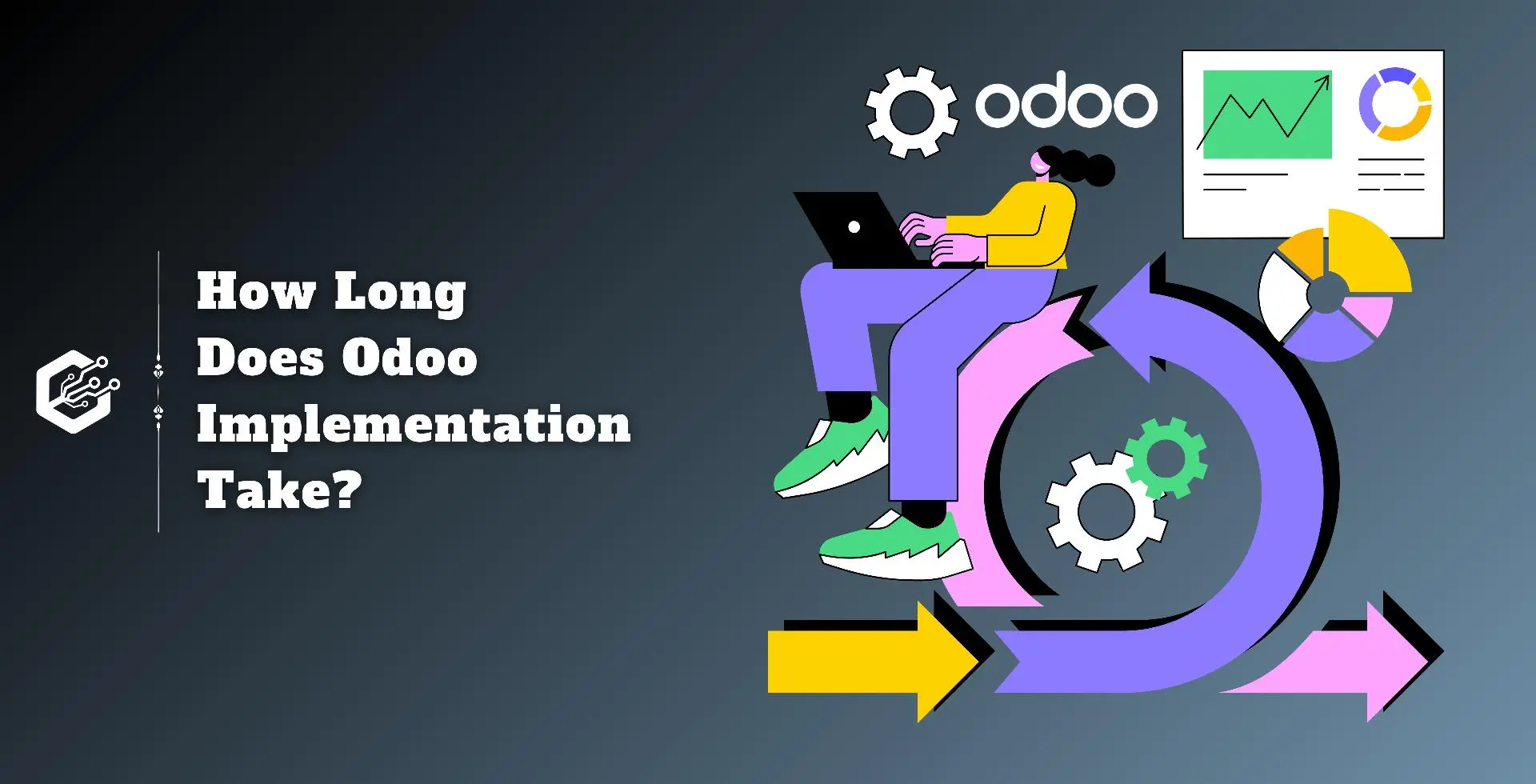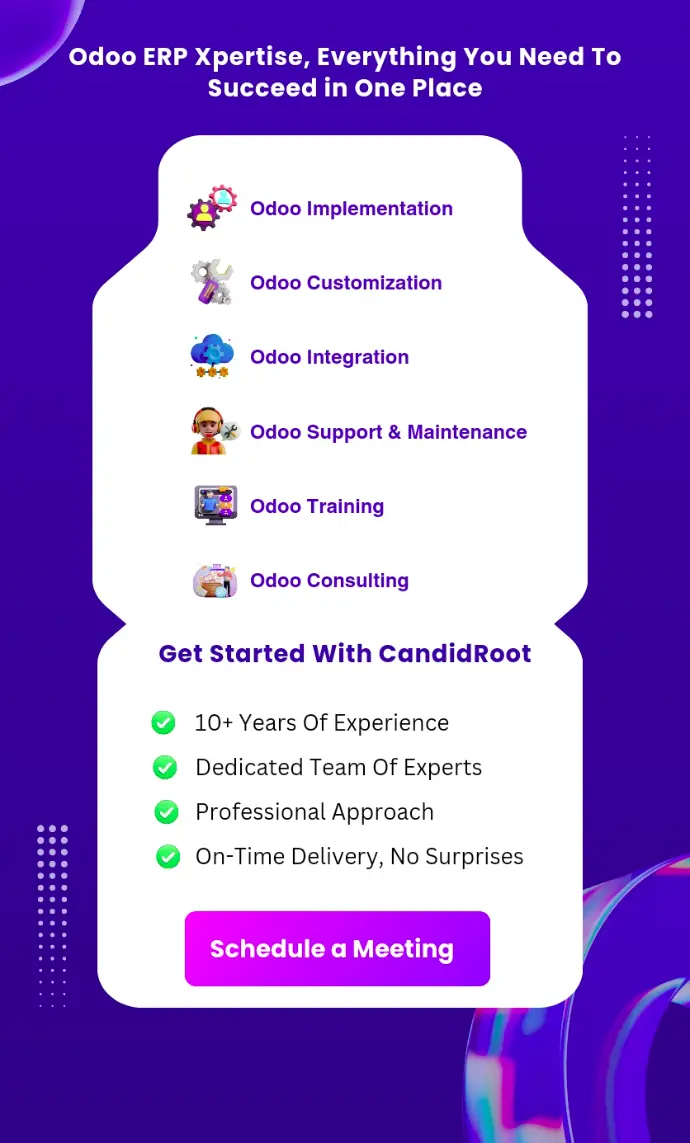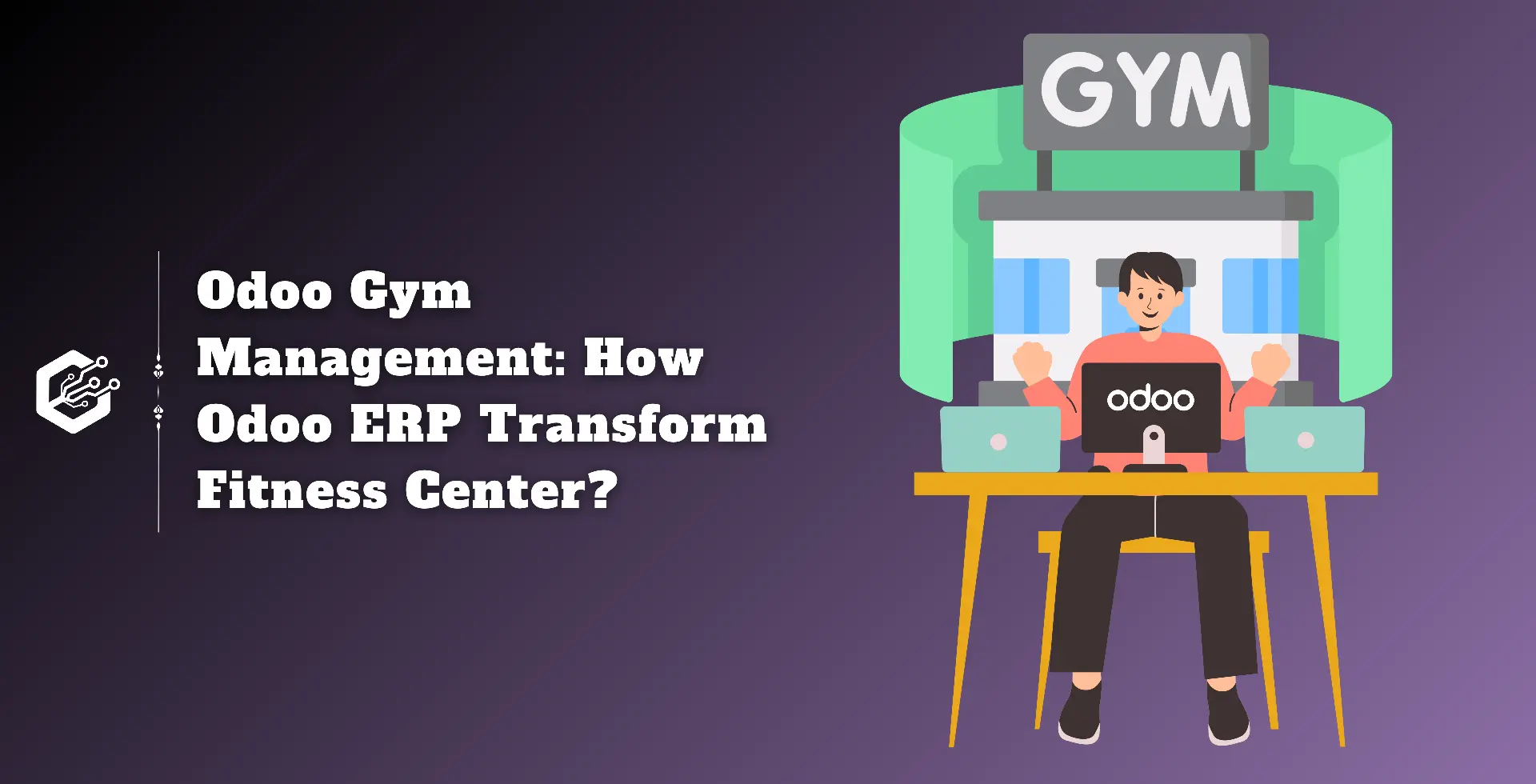Timing is crucial for any business, especially when introducing new software applications. Odoo users often ask questions such as, 'How much time will Odoo implementation take?' How many weeks are needed, or is it going to take months? Everything depends on how well you manage expectations.
Odoo offers a distinct system to all clients, including small and medium-sized enterprises as well as big companies. With time, they have defined what to expect at each stage of implementation.
In this guide, we will discuss all of the phases of Odoo deployment while addressing the key components that help define the needed business duration. Also, discuss what measures help keep the set time frame.
Understanding The Odoo Implementation Lifecycle
1. Requirements Gathering (1-2 weeks)
In this first stage, you meet your team or an implementation partner. You will discuss your current business workflows, challenges, and goals. Together, you choose the Odoo modules you need and set the scope. This helps you get clear on what you really want, and this stage usually takes 1 -3 weeks.
2. System Design & Planning (1-3 weeks)
Now you shape the plan for setup. You map workflows, define user roles, and plan where modules go. If integration or custom features are needed, they get sketched out here, which helps you know what work lies ahead and how long it may take.
3. Development & Customization (3-6 weeks)
Here, developers work on the site to set up Odoo, build any features you need, and configure settings. Basic configurations are faster, while deeper custom work takes longer. Expect this to take 3 to 6 weeks for moderate complexity.
4. Data Migration (1-4 weeks)
Data migration also includes moving old data (like customer, inventory, and invoices) into Odoo. First, you organize the data, then load and test it. Work or data that is disorganized or abundant requires a lot more time. This step could potentially take up to 4 weeks.
5. Quality Assurance Testing(2-4 weeks)
Once setup and data are in place, you test everything like module workflow, data integrity, and user cases. You fix bugs as they appear, and this testing phase helps avoid trouble later and takes around two to four weeks.
6. Training & Change Management(1-2 weeks)
Your team learns how to work with Odoo. You run hands-on sessions, show key workflows, and answer questions. Training helps your staff adopt the system well. This usually lasts 1 to 2 weeks.
7. Deployment & Go-Live(1week)
It is time to go live and fully transition to Odoo. Final checks are done, and you begin real operations in the system. You monitor performance and help users as needed. This phase is about 1 week.
8. Post-Go-Live Support
Even after go-live, you will get help to handle issues or make minor fixes. Your partner or team gives support as users settle in. This support phase continues as long as needed.
Factors Influencing Odoo Implementation Time
Scope of Implementation
If you only need one or two modules, the timeline is short. Add more modules or departments, and time increases. Bigger scope means more setup, testing, and planning.
Level of Customization
Using Odoo’s standard features is faster, but if you build custom workflows, reports, or apps, that slows things down. More custom work means more time.
Data Migration Needs
Migration is fast if your previous data is clean and simple. But unclear or large datasets need extra cleaning time, which can lengthen the project duration.
Testing and Quality Assurance
More testing helps prevent errors later, but it takes longer. Complex projects need extended testing time to avoid issues during go-live.
User Training and Adoption
A well-trained team adapts faster. If your team is big or spread across roles, training takes longer. Good change management speeds user adoption.
Typical Timeline Estimates for Odoo Implementation
1. Small Business(Single Module)
Usually, you need only core modules like CRM, Sales, or Accounting. No heavy custom work or integration in small-scale businesses. You can expect a timeline of 4 to 6 weeks in total. Some do it even in 3-5 weeks if all goes well.
2. Medium Businesses (Multi-Module Setup)
You might need inventory, purchase, HR, project, and accounting. Some customization and data work are required. That often takes around two to four months(eight to twelve weeks).
3. Large Enterprises(Full ERP Deployment)
You deploy many modules across departments. Custom modules, complex integrations, and global data. This typically takes 6 to 12 months, and in some cases, it may be longer than a year.
Best Practices for Reducing Odoo Implementation Time
There are some general steps you can follow to reduce the time taken for Odoo implementation. They help keep your Odoo deployment smooth and focused. By setting clear goals, involving your team early, and planning ahead, you reduce delays and extra work.
These key steps help you complete your Odoo implementation more quickly and with fewer problems. They focus on real actions you can take from the start. Use clear goals, team participation, and planning to reduce time. These proposals lead you to the fastest and easiest deployment of Odoo.
- Start Easy: Focus on core components first and schedule the more complex ones for later.
- Maintain customization to a minimum: Adhere to Odoo's internal functionalities as much as possible.
- Clean data well in advance: This reduces the time required for data migration.
- Foster User Engagement Early: Involve the users early to get their buy-in or simplify the onboarding process.
- Collaborate with a seasoned professional: An experienced Odoo developer can help streamline the project.
- Review Frequently: Divide the project into smaller parts, assess the work done, and then continue.
Conclusion
Implementing Odoo can take from a few weeks to many months. A small business using one or two modules may go live in around 4 to 6 weeks. Medium firms with more modules and moderate custom work usually need 3 to 6 months. Larger organizations with numerous workflows and integrations often take 6 to 12 months or more.
Streamlining adaptation and working with experienced professionals can accelerate this. If you’re searching for Odoo implementation services or planning a self-managed deployment, a well-defined goal greatly enhances the chances of success.
With the right team, commitment, and a balanced step-wise approach, you’ll avoid delays and additional expenses, and enjoy the complete advantages of Odoo without unnecessary burden.


